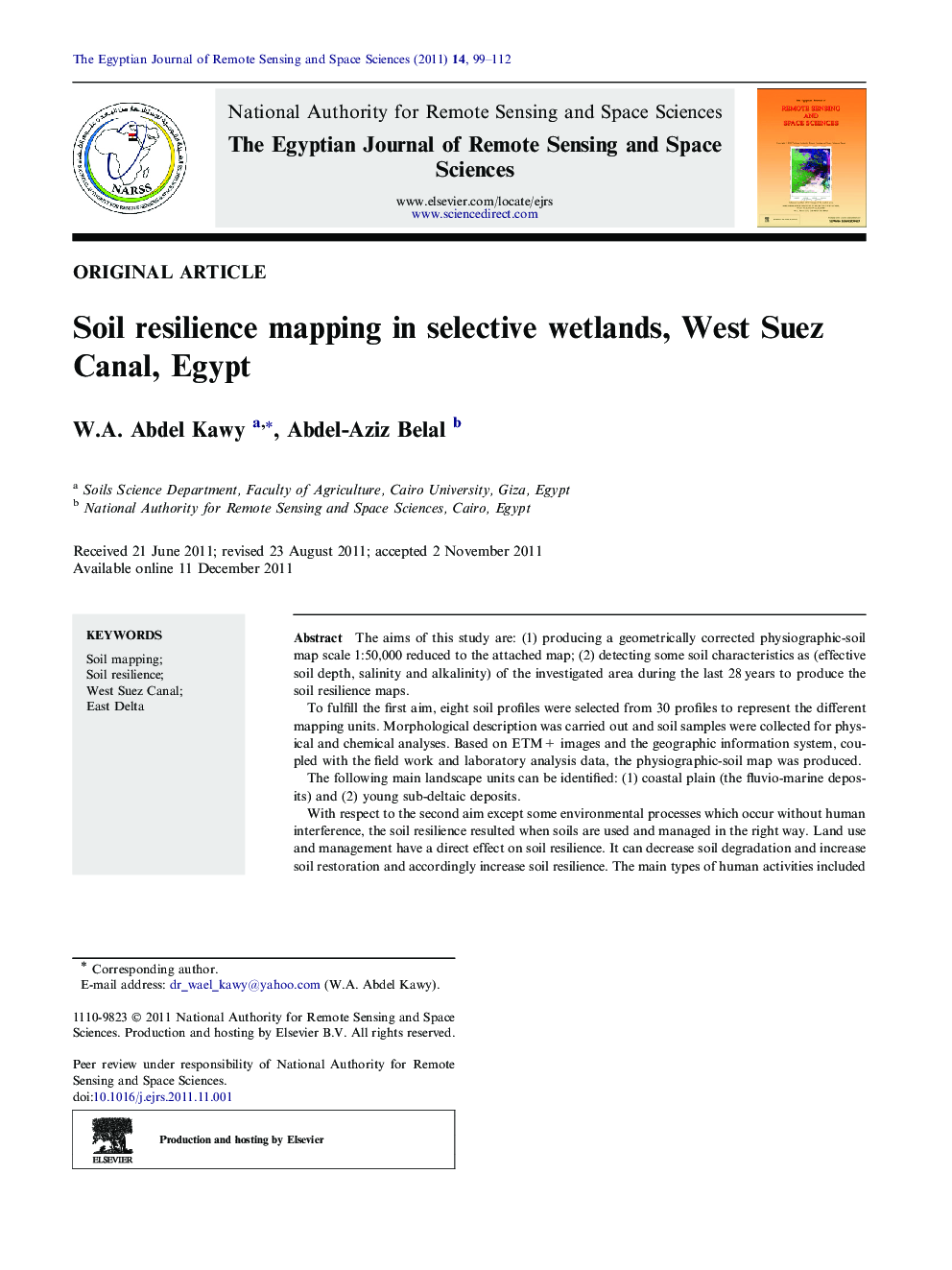| Article ID | Journal | Published Year | Pages | File Type |
|---|---|---|---|---|
| 4681429 | The Egyptian Journal of Remote Sensing and Space Science | 2011 | 14 Pages |
The aims of this study are: (1) producing a geometrically corrected physiographic-soil map scale 1:50,000 reduced to the attached map; (2) detecting some soil characteristics as (effective soil depth, salinity and alkalinity) of the investigated area during the last 28 years to produce the soil resilience maps.To fulfill the first aim, eight soil profiles were selected from 30 profiles to represent the different mapping units. Morphological description was carried out and soil samples were collected for physical and chemical analyses. Based on ETM+ images and the geographic information system, coupled with the field work and laboratory analysis data, the physiographic-soil map was produced.The following main landscape units can be identified: (1) coastal plain (the fluvio-marine deposits) and (2) young sub-deltaic deposits.With respect to the second aim except some environmental processes which occur without human interference, the soil resilience resulted when soils are used and managed in the right way. Land use and management have a direct effect on soil resilience. It can decrease soil degradation and increase soil restoration and accordingly increase soil resilience. The main types of human activities included soil resilience in the investigated area are soil resilience against salinization, soil resilience against alkalinization and soil resilience against water logging.The human action on soil resilience could be recognized through the man-action as good and proper land management, introducing proper land modern irrigation and drainage styles, in addition to adequate fertilizing programs.
